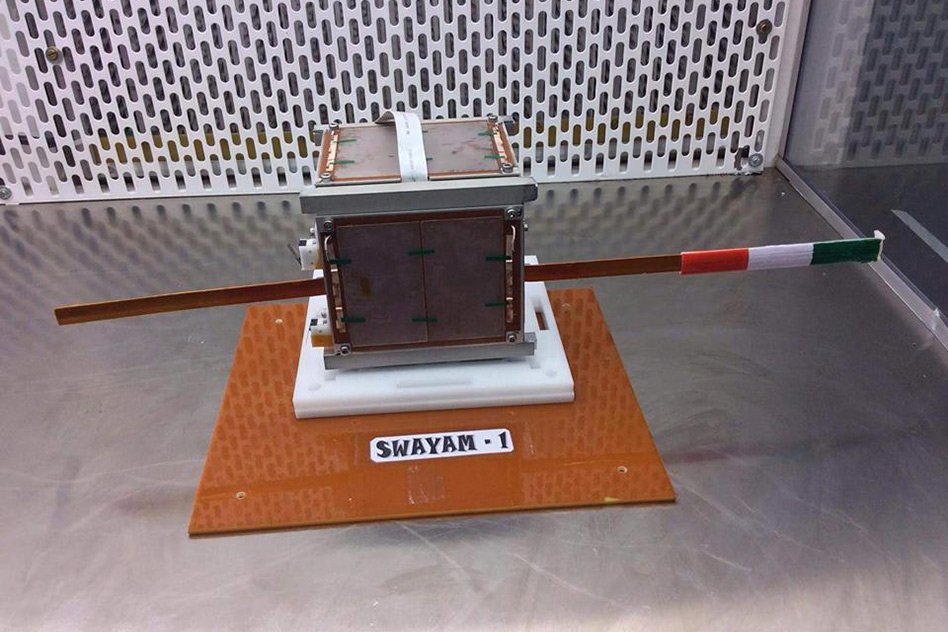Image Source: coep
With a lot of buzz around low levels of research by technical institutes in the country, these young (yet-to-be) engineers from College of Engineering, Pune (COEP) have already proved their acumen by making a satellite named “Swayam” all by themselves (hence the name!). Swayam will be used for point to point messaging all over the globe.
What is it exactly?
Started in late 2008, the COEP Satellite Project christened as Swayam revolves around the challenge of building a “pico-satellite” destined to orbit the Earth at a height of 500-800 km, with a total weight of 1 kg and the volume restricted to a mere 1000 cc! Just imagine the challenge of fitting all the components inside a small cube-shaped box of 10cmx10cmx10cm.
The challenge extended to the selection of suitable electronic devices to honour the mere 2 W of power produced by the solar panels. With this in mind, the team has devised an ingenious passive stabilization system thus eliminating the need of bulky and power hungry equipments. This Passive Attitude Control System of Swayam is the first of its kind in India!
Has such satellite been made earlier in India?
COEP is in line to become the country’s third institute to have a successful students’ space programme, IIT-Kanpur and Annadurai University being the earlier two. However, Swayam is the most cost-effective in relation to the previous ones and, maintaining the promises delivered by Mangalyaan, is being launched at a much lower cost, a mere Rs. 35 Lakh!
What is Swayam Satellite’s Mission Objective?
To demonstrate the control of orientation of satellite in its orbit without power consumption and to provide messaging services to the people.
The journey
The project is largely student driven involving students from all streams and all years of engineering, a fact highly acknowledged by the Indian Space Research Organisation (ISRO). All design work was done by the students with due assistance from the college faculty. A MoU was signed for the development and launch of Swayam between COEP and ISRO in May 2013. The team cleared the Critical Design Review with ISRO in September 2014. After going through harsh environmental tests at ISRO, the Flight Model assembly and testing was done in February 2015.
So when is the launch?
The satellite has been handed over to ISRO and will be launched in the 4th week of April 2016 along with ISRO’s CARTOSAT-2C by Polar Satellite Launch Vehicle (PSLV-C34). Stay tuned.
How will they communicate with the satellite?
A ground station has been set up within the college premises from where communication with the satellite will be established. The students themselves designed the interfaces for the antenna rotor assembly. Presently the Ground Station has received signals from many Amateur Radio Satellites.
Messaging services
Swayam hosts point to point messaging services which will enable it to store and forward messages from one corner of the globe to the other via the satellite. Hardware and software necessary for decoding the network layer protocol will be provided by the Swayam team.
International acclamation
Members of the Swayam team have been presenting research papers at successive International Astronautical Congress (IAC) from 2012 Naples to IAC 2015 Jerusalem and many more in the country. Their work is highly appreciated by the international community. Previously, former Project Manager and OC Team Lead, Nischay Mhatre was awarded the Luigi Napolitano award at the 62nd IAC, Cape Town, South Africa in October 2011. The award is given annually by the International Astronautical Federation to a young scientist under the age of 30 for outstanding work in the aerospace area. Nishchay is the first Indian to receive this award.
Future perspective
The team is currently working on its next mission of building a satellite to demonstrate orbit manoeuvering using solar sails.
The Logical Indian community congratulates the achievements and salutes the spirit of these budding innovators of tomorrow. The successful flight of Swayam should encourage more similar initiatives all across the country, making India a Space-Superpower in the real sense.
-Sachin Jadhav











